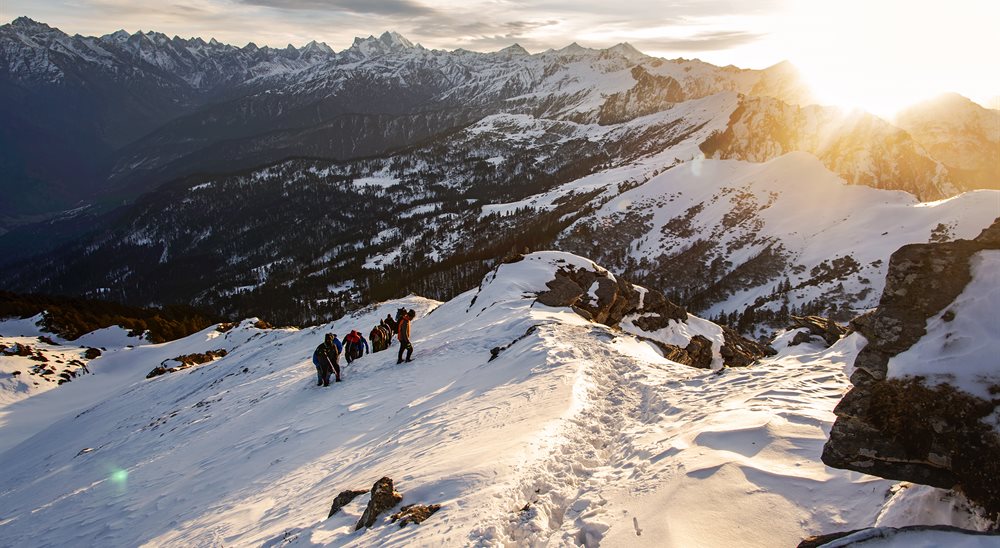

The Kedarkantha Trek is a famed winter trek located in the Garhwal region of Uttarakhand, India. The history of tourism in this region can be traced back to the time when the raw beauty of the Himalayas started attracting adventurers and spiritual seekers. However, Kedarkantha as a trekking destination gained prominence more recently, with hikers and nature lovers exploring the area since the late 20th century.
Historically, the region around Kedarkantha has been significant for its religious importance, with the word "Kedar" referencing Lord Shiva. While the more renowned Kedarnath Temple has been a pilgrimage site for centuries, Kedarkantha began attracting trekkers looking for an off-beat trail that offered both spiritual solitude and natural splendor. Initially visited by seasoned hikers, today it is a popular trekking path for enthusiasts of all skill levels, especially during the winter months when the snow-clad landscape presents an ethereal allure.
The development of local tourism infrastructure such as guesthouses, trekking guides, and transportation has facilitated access to Kedarkantha. As a result, what used to be the pursuit of a few has now become a sought-after adventure for many. The government and local communities have also put efforts into promoting sustainable tourism practices to preserve the ecology and cultural integrity of the area.
Eco-Friendly Trekking: With the growing awareness about environmental conservation, eco-friendly trekking has become a significant trend. More trekkers are now choosing operators who demonstrate responsible tourism practices. These include carrying back waste, ensuring minimal ecological disruption, and respecting local customs.
Homestays and Local Experiences: Tourists are increasingly preferring homestays over commercial accommodations. Immersing themselves in the local culture and experiencing the simple mountain lifestyle has enhanced the appeal of the Kedarkantha trek. Local cuisine and traditions form an integral part of the tourist experience.
Customizable and Small-Group Treks: Personalized itineraries that cater to smaller, private groups are trending. Such customized treks allow for a more intimate experience of the natural surroundings and can be adapted to the needs and pace of the trekkers.
Seasonal Shifts: While Kedarkantha is legendary as a winter trek, increasingly, tourists are exploring the region in other seasons to avoid crowds and engage with the mountain terrain in its varied seasonal moods, from the blossoming spring to the verdant monsoons.
Health and Wellness Tourism: Trekking is being increasingly associated with not just adventure, but also holistic well-being. Trekkers are looking for experiences that blend physical activity with mental rejuvenation and Kedarkantha’s pristine environment makes it apt for such retreats.
Social Media Influence: Another notable trend is the influence of social media on the popularity of trekking destinations. Picturesque landscapes of Kedarkantha’s summit and campsites have populated platforms like Instagram, drawing in a younger demographic eager to capture their own experiences.
The dynamic allure of the Kedarkantha Trek continues to evolve with changing tourism trends while maintaining its essence—a serene yet thrilling communion with nature at the heart of the serene Garhwal Himalayas.